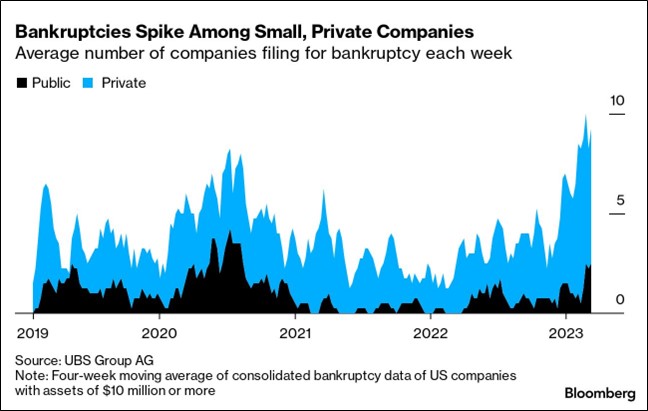
Credit crunch 2.0: The growing importance of resilient Business Models and Sustainable Capital Structures in Private Equity
Introduction
Over the last years, the private equity landscape has witnessed a surge in increasingly aggressive capital structures for leveraged buyouts. Driven by the pursuit of higher returns, numerous private equity firms have sought to maximize their investments by employing excessive debt to finance acquisitions. However, this aggressive approach has come with significant risks, leading to concerns among banks and private debt providers. With strongly increasing interest rates, more and more aggressive leveraged buyouts begin to tumble. As a result, these financial institutions are now dedicating more efforts to portfolio management, emphasizing the importance of resilient business models and sustainable capital structures to secure successful transactions.
Aggressive Capital Stack
In recent years, the competitive nature of the private equity industry has prompted firms to take on higher levels of debt, hoping to magnify their returns. This practice, known as overleveraging, entails increasing the debt-to-equity ratio in an acquisition deal. Although overleveraged investments may deliver substantial returns in the short term, they expose companies to heightened financial risks and hamper their long-term growth prospects.
Consequently, a growing number of portfolio companies have faced difficulties servicing their mounting debts, leading to potential defaults and bankruptcies. As banks and private debt providers have been at the forefront of financing these deals, the increased risk exposure has made them more cautious in their approach to lending.
Increasing Portfolio Management efforts
To mitigate the risks associated with overleveraged investments, banks and private debt providers have increased their portfolio/debt management efforts. Rather than just focusing on originating new transactions, they are now heavily engaged in restructuring and turnaround activities. This heightened focus on portfolio management has been catalyzed by the lessons learned from the aftermath of the 2008 financial crisis. Many financial institutions faced severe losses due to the collapse of overleveraged investments during that period. As a result, there is now a greater emphasis on proactive monitoring, early identification of red flags and a hands-on approach to managing portfolio companies.
The Role of Resilient Business Models
One of the critical factors that banks and private debt providers now consider when evaluating potential investments is the resilience of the target company’s business model. A resilient business model demonstrates the ability to adapt to changing market conditions, economic downturns and disruptions in the industry.
A company with a resilient business model is better equipped to weather economic storms, maintain steady cash flows and service its debt even during challenging times. This resilience is derived from diversification of revenue streams, the scalability of operations, and a customer-centric approach. By investing in companies with robust business models, financial institutions aim to minimize the risk of default and increase the likelihood of a successful investment outcome.
„Resilient business models and sustainable capital structures are not merely buzzwords but prerequisites for long-term success in the private equity domain. Companies that prioritize adaptability and financial prudence are better equipped to thrive amid uncertainties”, says Fabian Kröher, Executive Director of Winterberg Group AG.
Sustainable Capital Structures: A Key to Long-term Success
Another crucial aspect that banks and private debt providers now emphasize in investment decisions is the establishment of sustainable capital structures. Sustainable capital structures strike the right balance between debt and equity financing, ensuring that the company can comfortably manage its debt obligations without being burdened by excessive interest payments.
A sustainable capital structure reduces the risk of financial distress and allows the company to invest in growth initiatives, research and development, and operational improvements. It also provides the flexibility to weather economic downturns, avoiding the need for distress sales of assets or shares to meet debt commitments.
Conclusion
The past years have seen a notable increase in overleveraged investments in the private equity sector. In response to this trend, banks and private debt providers are now dedicating more efforts to portfolio management, prioritizing resilient business models and sustainable capital structures in their investment decisions. By emphasizing these factors, financial institutions seek to minimize risks, enhance the probability of successful investments, and support the growth and stability of their portfolio companies. As the private equity landscape continues to evolve, the lessons learned from the consequences of overleveraging are steering the industry towards a more cautious and sustainable approach to investment management.
„With increasing interest rates and increasing complexity of obtaining debt finance, we expect Private Equity players with a sustainable leverage structures and resilient investment strategy to prevail in the coming years„, says Fabian Kröher, Executive Director of Winterberg Group AG.
